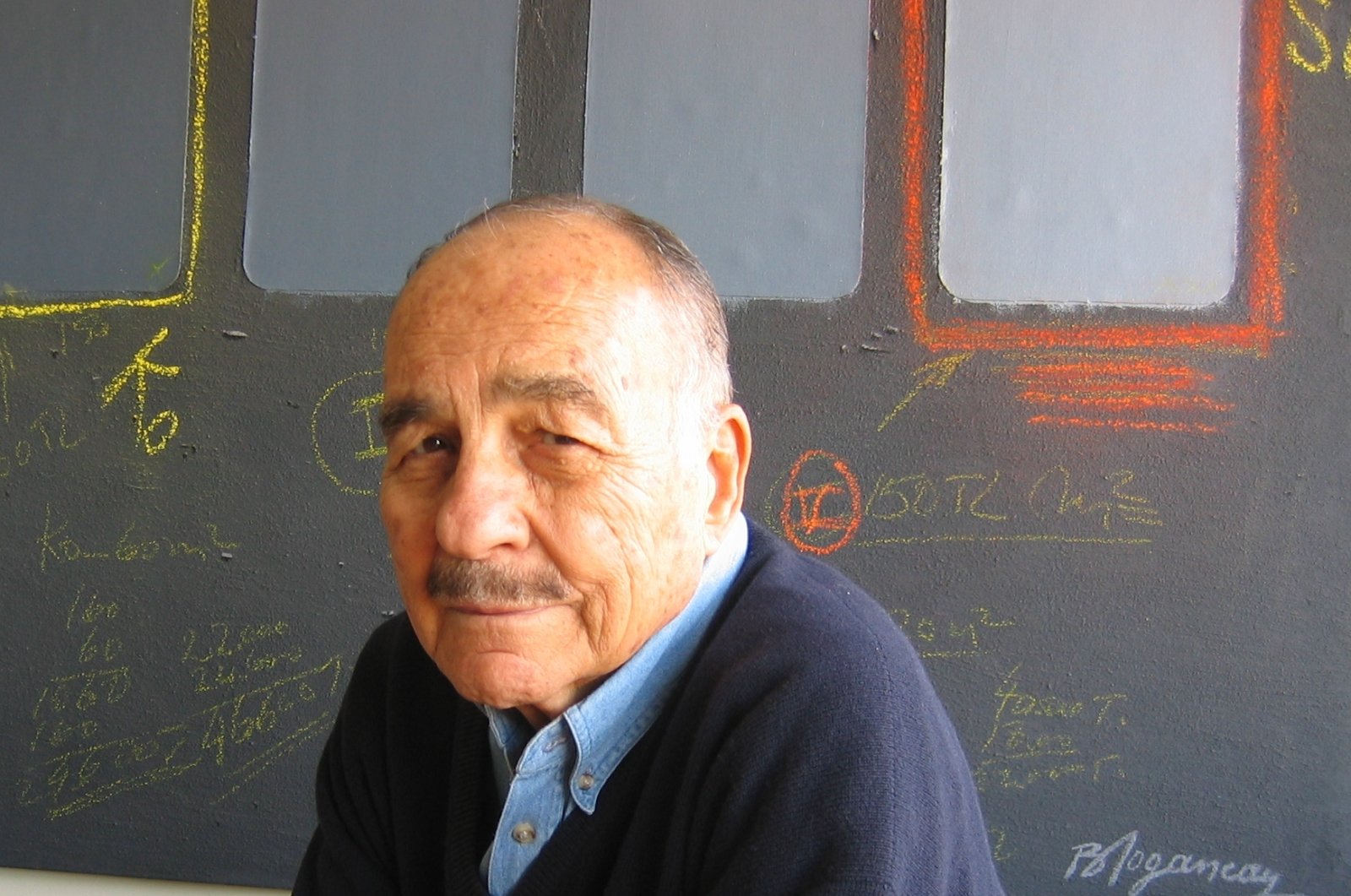This year, we leave behind the 10th death anniversary of Burhan Doğançay, considered one of the most important figures in Turkish contemporary art. Departed from us in 2013, Doğançay succeeded in becoming one of the most sought-after names in Turkish art – both nationally and internationally.
In memory of Doğançay, let’s take a brief glimpse into the artist’s life.
How did he start?
“Walls are a mirror of society” a phrase etched in our minds by Doğançay, born in Istanbul in 1929. Spending his childhood traveling extensively across various regions of Anatolia with his father, Adil Doğançay, a cartographer and also a painter, Doğançay naturally received his first art education from his father. His father, known for his watercolor paintings, became his first teacher.
However, despite his father’s occupation as a painter, he wished for Burhan to become a lawyer. With deep respect for his father, Doğançay graduated from Ankara University’s Law School in 1950.
Afterward, he went to Paris, where he completed his education and earned his doctorate in France. Despite holding official positions abroad for a certain period, his belief in painting and his unwavering desire continued to grow. While believing that New York was the center of the art world, he pursued his painting alongside his professional life.
However, when he was assigned to Paris with an official duty, he found himself on the brink of a significant decision. Doğançay referred to this situation as a “major turning point” in his memoirs. The question in his mind was whether to stay in the art center of the world or move to Paris. The answer was already clear in his mind; Doğançay would choose the career he had always dreamed of and solely become a painter. Thus, his years in New York, where he would spend most of his artistic life, officially began.
One day, while walking on 86th Street in Manhattan, he described a wall covered with rain and mud traces as the “most beautiful abstract painting” he had seen. Choosing city walls as a recurring motif in his works, he reinterpreted the walls he encountered on Manhattan streets on paper, marking the beginning of his “General Urban Walls Series.”
From that point on, Doğançay made significant efforts to introduce the term “wall art” into the art world’s vocabulary.
“They are speaking walls. Wall messages constantly change, new ones replace the old, and the old ones are covered or deteriorated by natural conditions. From cave drawings to the present, the entire human experience has been reflected on walls,” Doğançay shared in his memoirs.
Artistic life in U.S.
He held his first solo exhibition in the U.S. at the New York Ward Eggleston Gallery. Although the exhibition was an important achievement for an unrecognized artist, unfortunately, his works did not find buyers.
At that time, there was almost no initiative regarding contemporary art in Türkiye. While surviving as an artist in America was challenging enough, finding an audience for his art in Türkiye during that period was impossible. Contemporary art had already become popular in the U.S., leading to intense competition.
Works that would later reach million-dollar values in the art market had started to take their place during those times. However, Doğançay, who was relatively new to this market, had not yet found his place. It is important to note that, guided by prominent gallerists like Leo Castelli, pop art and contemporary art had a tremendous impact, making it extremely difficult for artists who migrated to the U.S. in the 1960s.
Doğançay was one of the struggling artists facing this difficulty.
Therefore, his acquaintance and friendship with Thomas M. Messer, the director of the Solomon R. Guggenheim Museum at that time, became another significant turning point in his life. Messer, who encouraged Doğançay to stay in New York and face the city’s challenges when he was on the verge of giving up, had a remarkable impact on the artist’s career.
A trip Doğançay made to Israel in 1975 played a crucial role in shaping the continuation of his artistic life. This journey marked the inception of his lifelong “World Walls” photography project.
From then on, he spent his life following and photographing walls worldwide, gathering inspiration for his works.
Under the “Walls of the World” photography project, Doğançay traveled to 114 countries, capturing the walls and people of each country, creating documentation for the series he would produce throughout his artistic career.
Without chasing material values but driven solely by excitement and the desire to create, the artist chose to depict the reflection of the living world, nature, and people through his perception on canvas. With his ongoing projects throughout his life, he managed to become a source of great pride for our country.
When his exemplary personality and diligence merged with his artistic persona, his name and works became immortalized. Through the foundation he established and the considerable effort he put into the Doğançay Museum to contribute to the promotion of our country and guide future generations, Doğançay will always live on.
Unknown facts
Doğançay is the only Turkish artist whose works are included in the permanent collections of over 100 museums worldwide. When he decided to quit his profession and just become a painter, this news was published in the press as “Turkish Diplomat Chose Painting.”
In recognition of interpreting New York most beautifully through a collection of eighty watercolor paintings titled “New York and Its Walls,” the city’s Mayor presented him with a commendation for being the artist who portrayed New York most beautifully.
In 1964, his piece titled “Billboard” was included in the Solomon R. Guggenheim Museum collection, marking his first artwork in a permanent museum collection.
In 1995, Doğançay was honored with the Culture and Arts Grand Award by the President of the Republic of Türkiye. In 2009, his piece titled “Blue Symphony,” created in 1987 was sold for a record price, the highest ever achieved by a living Turkish artist at that time.
In the same year, the New York Metropolitan Museum included his work “Ribbon Mania” in its collection, marking the first contemporary Turkish art piece to be included.
Later, in their book “Masterpiece Paintings,” the museum chose this piece as one of the 500 masterpiece works in their collection.







